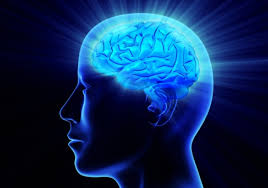BECHINT SINGH, BHAI (1872-1921), one of the Nankana Sahib martyrs, was the son of Bhai Sundar Singh and Mat Sahib Kaur, a peasant couple of the village of Pharala in Jalandhar district. The family migrated to Chakk No. 258 Pharala in the newly colonized district of Lyallpur in 1892. In 1907, while returning from Haridvar after immersing in the River Ganga the ashes of his deceased wife, Bechint Singh stayed for a couple of months at Amritsar where he came in contact with a holy man, Sant Kirpal Singh, at whose hands he took the pahul of the Khalsa.
BHAGALPUR (25°14`N. 86°58`E), a district town in Bihar situated on the right bank of the River Ganga, was visited by Guru Tegh Bahadur in 1666. Bari Sangat on Burhanath Ghat, where he stayed, is now represented by a small shrine, constructed in a bylane in 1974. It is called Gurdwara Bari Sangat Sri Guru Tegh Bahadur Ji Chauki Sahib. It contains a stone slab (chauki) which, it is believed, was used by the Guru to sit on for his bath.
BHAGVAN SINGH, RAJA (1842-1871), was born at Nabha on 30 November 1842, the younger son of Raja Devinder Singh. He ascended the throne of the princely state of Nabha on 17 February 1864 after his elder `brother. Raja Bharpur Singh, had died issueless. Raja Bhagvan Singh too died childless on 31 May 1871 of tuberculosis at Nabha.

BHANA, lit. liking, pleasure, will, wish or approval, is one of the key concepts in Sikh thought. In Sikhism, it refers specifically to God`s will and pleasure. Raza , an Arabic term popular in the context of various schools of Sufi thought, also appears frequently in the Sikh texts to express the concept of UMArSA bhana. According to this concept, the Divine Will is at the base of the entire cosmic existence. It was His bhana, His sweet will which was instrumental in the world`s coming into being: "Whenever He pleases He creates the expanse (of the world of time and space) and whenever He desires He (again) becomes the Formless One (all by Himself)" (GG, 294).
BHANU BHAI, a Bahil Khatri of Rajmahal in the present Santhal Parganah of Bihar, was a devout Sikh of the time of Guru Hargobind. According to Bhai Mani Singh, Sikhan di Bhagat Mala, Bhai Bhanu once asked Guru Hargobind, "0 true king! Different religious books prescribe different paths to be followed such as austerities, pilgrimages, sacrifices, fasting, rituals, knowledge and meditation. Which is the best way to attaining the goal?" The Guru replied, "Cultivate God`s Name with humility, and you will obtain liberation."
BHAVANIGARH (30° 14`N, 76° 3`E), also called Dhode locally, is a market town 36 km west of Patiala. Guru Tegh Bahadur arrived here from Alo Harakh in the course of a journey through the Malva region. His devotees constructed a platform around two pipal trees under which the Guru had sat.. A gurdwara, called Gurdwara Sri Guru Tegh Bahadur Sahib Ji Patshahi Nauvin, was constructed by the local sangat in 1916.
BHUNGARNI, village near the right bank of the Jalandhar branch of the Bist Doab canal, 20 km south of Hoshiarpur (31° 32`N, 75° 55`E), is sacred to Guru Har Rai, who stayed here in the course of his journey between Kiratpur and Kartarpur. A platform and a small shrine, established inside the village in honour of the Guru`s visit, was looked after for a long time by a line of Mirasi (Muslim bards or heralds) priests until the local Sikh sangat took it over in the Singh Sabha days. Later, a new building was raised on the site (cornerstone laid on 19 March 1917).







